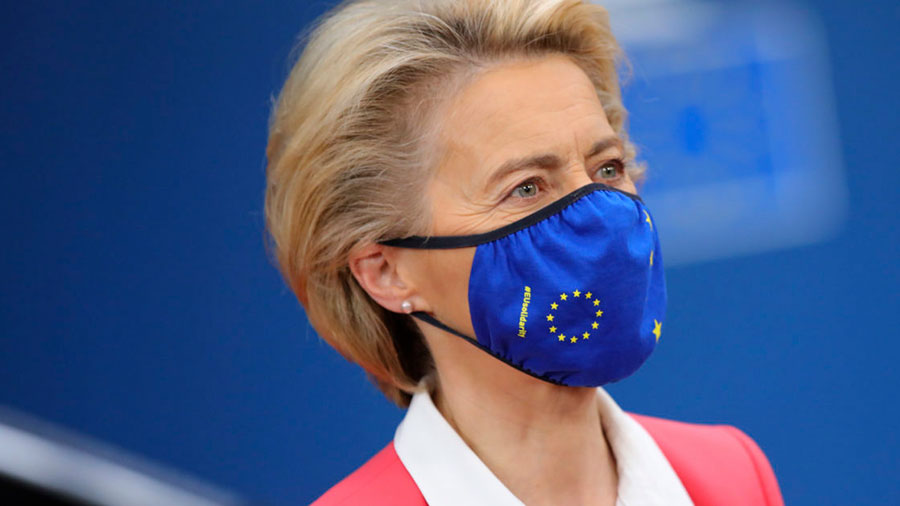The Financial Structuring Behind The EU’s €300 billion ‘Global Gateway’ Belt And Road Competitor

It remains something of an enigma that following all the criticism of China’s outbound investments following the start of the Belt and Road Initiative in 2012, that now both the EU and US have decided that investing in overseas infrastructure projects is a good thing after all. That has reached zenith today when Ursula von der Leyen, the President of the EU Commission, unveils the latest EU ‘Global Gateway’ plan, a €300 billion spend to mobilize up to €300 billion in public and private funds by 2027 to finance EU infrastructure projects abroad.
This means a €60 billion per annum investment for the next five years. The UK last week unveiled a rather more modest £9 billion British International Investment fund (€10.58 billion) fund to do the same, much of what we suspect will go into shoring up funding for the British Commonwealth in the wake of Barbados declaring itself a Republic after Beijing lent it US$115 million for road repairs.
The Big Daddy of them all however is the expected US$3.5 trillion ‘Build Back Better World’ bill which is still being haggled over by the US Congress. That body approved a US$1.5 trillion partisan infrastructure bill to finance the redevelopment of US infrastructure, however it remains to be seen how the appetite for significant US infrastructure expenditure overseas really is. That US$3.5 trillion won’t be the same amount after vested interests chop parts off it.
Today, therefore, the EU’s €300 billion commitment is the largest of these spends, but still way short of the US$40 trillion that G7 leaders promised to spend on developing countries by 2035. Even so, it’s a lot of money. So where will it come from?
The EU’s plan is to build next-generation infrastructure such as fiber optic cables, 5G networks and green energy plants in the developing world, while also trying to compete with China on transport facilities, such as highways and airports. That is more than just financing – whoever controls the Comms controls the airwaves, and that will mean political influence.
The €300 billion can be broken down into different contributing components.
€135 billion will be provided by the European Funds of Sustainable Development Plus (EFDS+), an existing EU budget fund — of which €25 billion come from a new, yet-to-be created funding mechanism which would receive €750 million from the EU budget in annual tranches between 2022 and 2027, conditional on the European Investment Bank (EIB) matching these funds. There is no reason why it should not – the EIB is the European Union’s investment bank and is owned by the EU Member States. It is one of the largest supranational lenders in the world, and has coughed up nearly €1 trillion since 1958. But political considerations will still mean that member states agree to support the projects it will be asked to finance, meaning it’s not entirely cut and dried.
€135 billion will be sourced from “planned investment volumes by European financial and development finance institutions”, suggesting that this capital has already been committed to in one form or another and is being rebranded as ‘Global Gateway’ with the EU taking the credit.
The remaining €18 billion is to be sourced from “other EU external assistance programmes” again suggesting that this is being rebadged from aid programmes that already have financial budgets committed to them. Interestingly, the EU already donates nearly this same amount in external scholarships every year to overseas students.
Reading between the lines then, half of the EU’s €300 billion spend appears to be made up of existing, rather than new financing, dressed up in new ‘Global Gateway’ clothes. Of the rest, the European Investment Bank – which is already involved in finance – will commit – providing member states agree, and there are surely going to be fights about why the EU is funding overseas infrastructure when local EU member nations have road repair bills.
Is the ‘Global Gateway’ really a new commitment to finance US$300 billion in overseas infrastructure development? No. But it looks good on paper, which means that politically, albeit weirdly, that it has done its job.
Related Reading
About Us
Chris Devonshire-Ellis is the Chairman of Dezan Shira & Associates. The firm assists British and Foreign Investment into Asia and has 28 offices throughout China, India, the ASEAN nations and Russia. For strategic and business intelligence concerning China’s Belt & Road Initiative please email silkroad@dezshira.com or visit us at www.dezshira.com





